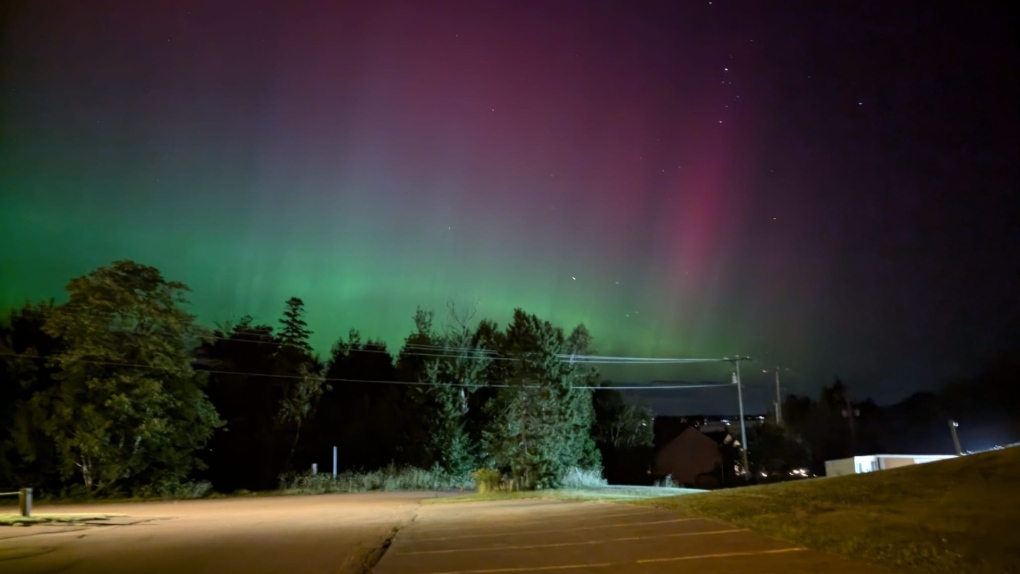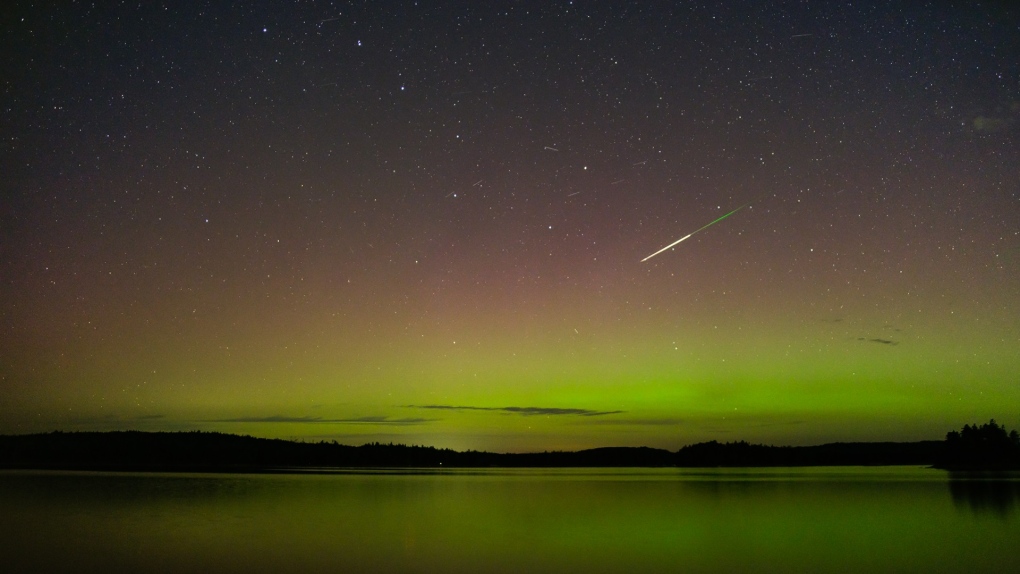Northern lights, Perseid meteor shower light up Maritime skies
Maritimers were treated to both the aurora borealis, also known as the northern lights, and the Perseid meteor shower Sunday night and into Monday morning.
The Perseid meteor shower is created from the debris of the comet Swift-Tuttle and peaks around this time each year.
“If you're out any night at all if you're lucky you might get to see it, especially from a dark sky, you might get to see three or four or five meteors every hour, depending on how dark your sky is. This time you get the chance to see 20 or 30, and they're predicting up to 50 or 60 per hour,” said Saint Mary’s University astronomy technician, Tiffany Fields.
 Susy Medeiros Sehmrau snapped this picture of the northern lights above O'Leary, P.E.I. (Source: Facebook)
Susy Medeiros Sehmrau snapped this picture of the northern lights above O'Leary, P.E.I. (Source: Facebook)
“It was pretty special and really unexpected. The northern lights happened because there is a bunch of material that the sun unleashed a few days ago and over a few different events or coronal mass ejections. Those arrived over the weekend, and there was one that arrived last night seemed to really light up the skies. I was very, very surprised to see how strong that northern lights display ended up being,” said Fields, adding that she was shocked to be able to see them faintly in Halifax.
 The northern lights are seen above Fredericton on Aug. 12, 2024. (Source: Facebook/Mark Currie)
The northern lights are seen above Fredericton on Aug. 12, 2024. (Source: Facebook/Mark Currie)
Fields adds it is likely we will see greater northern lights activity in the next coming months.
“The increased frequency and strength of the northern lights lately is actually the sun is reaching what we would call a solar maximum. So the sun goes through an 11-year cycle where sometimes there is more activity on the sun and sometimes there is less. We are reaching a state where there is much more activity on the sun, and that increased solar activity leads to more coronal mass ejections which leads to more stuff being flung out into the solar system to interact with the Earth's atmosphere," she says.
"The increase, in the northern lights that we've seen is because of the increased activity in the sun, and I would anticipate we continue to see increased northern lights activity maybe through the beginning of 2025.”
 A shooting star above Halifax. (Source: Facebook/Jason L Dain)
A shooting star above Halifax. (Source: Facebook/Jason L Dain)
Fields adds the best part is no equipment is needed.
“You don't need any special equipment to enjoy what the sky is giving us. You don't need any binoculars, no telescopes and the best thing to do is to share the activity with others," she says.
"Bring some friends, your family, go outside and find a dark, safe spot even if that's just in your backyard, and just go enjoy the show. Go count the number of shooting stars that you see. Make it a competition between your friends because it's something that we don't get to see often.”
The northern lights also made their appearance over the weekend in other parts of Canada and the United States.
The Perseid meteor shower is visible until Sept. 1. The best viewing is on Monday, though it is unclear if the northern lights will return.
Click here for a photo gallery of images from across the Maritimes.
With files from CTV's Avery MacRae.
CTVNews.ca Top Stories

London Ont. Liberal MPs say that Trudeau is taking time to reflect on his future
Both of London’s Liberal MPs are choosing their words carefully when it comes to their party's leadership future. They were asked about the situation in Ottawa at Friday's housing announcement in London.
Blake Lively accuses 'It Ends With Us' director Justin Baldoni of harassment and smear campaign
Blake Lively has accused her 'It Ends With Us' director and co-star Justin Baldoni of sexual harassment on the set of the movie and a subsequent effort to “destroy' her reputation in a legal complaint.
Trudeau's 2024: Did the PM become less popular this year?
Justin Trudeau’s numbers have been relatively steady this calendar year, but they've also been at their worst, according to tracking data from CTV News pollster Nik Nanos.
New rules clarify when travellers are compensated for flight disruptions
The federal government is proposing new rules surrounding airlines' obligations to travellers whose flights are disrupted, even when delays or cancellations are caused by an "exceptional circumstance" outside of carriers' control.
10 people including children die in stampede in Nigeria at a Christmas charity event
Ten people, including four children, were killed in a stampede in Nigeria's capital city as a large crowd gathered to collect food and clothing items distributed by a local church at an annual Christmas event, the police said Saturday.
Sask. police investigating mischief incident after bomb report in school
Prince Albert police are investigating a mischief incident after a bomb report in a school Friday afternoon.
Wild boar hybrid identified near Fort Macleod, Alta.
Acting on information, an investigation by the Municipal District of Willow Creek's Agricultural Services Board (ASB) found a small population of wild boar hybrids being farmed near Fort Macleod.
Manhunt underway after woman, 23, allegedly kidnapped, found alive in river
A woman in her 20s who was possibly abducted by her ex is in hospital after the car she was in plunged into the Richelieu River.
Calling all bloodhounds: These P.E.I. blood donors have four legs and a tail
Dogs are donating blood and saving the lives of canines at the University of Prince Edward Island's Atlantic Veterinary College in Charlottetown.

































